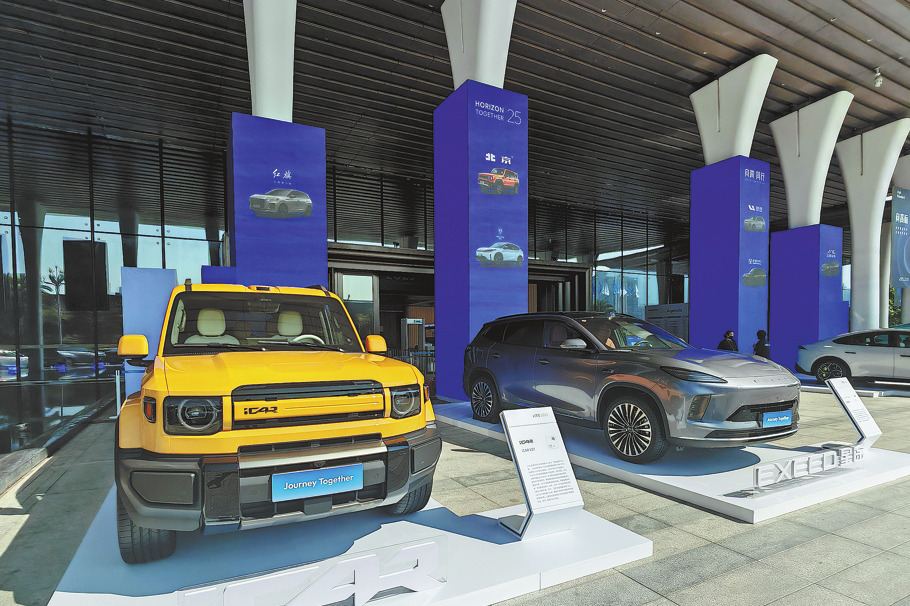Witness of history
A four-month exhibition provides an opportunity to reassess the life and times of Ming Emperor Wanli, Wang Kaihao reports.

In 1573, Zhu Yijun sat on the throne, as a 10-year-old boy and the ruler of an empire that had fallen from its apex.
That started the story of the longest-reigning emperor of the Ming Dynasty (1368-1644), whose life was full of controversies and legends — political unrest, tense relations with high officials and loneliness as a result of his "tiger mother", which together made it difficult for him to handle state affairs.
However, his 48-year rule had another side: economic boom, reviving links overseas, military triumphs, quenching rebellions, and successful efforts in fighting invaders. Better known as Emperor Wanli, he created a complicated era and left room for reminiscence to argue and judge.
An ongoing exhibition in Beijing might inspire viewers to re-evaluate his entangled life.
Co-organized by the National Library of China, Art Exhibitions China and several other institutions, the four-month exhibition Encounter a Colorful Ming Dynasty in 1573: A Special Exhibition on Cultural Relics From Wanli Era opened to the public in late April at the National Museum of Classic Books, located in the southern venue of the national library. The 137 artifacts, on loan from the Administration of the Ming Tombs, the National Centre for Archaeology and Beijing Art Museum, include gold, silver and jade items, textiles and porcelain.
"The artifacts not only represent the high level of art and craftsmanship during that time, they also demonstrate the royal aura and social features," Feng Xue, a curator of the exhibition, says.
The emperor's crown, which was knotted with more than 500 gold threads, is among the highlights of the exhibition. Each thread is no wider than 0.2 millimeters, and the crown weighs about 800 grams. A pair of dragons are entrenched on both wings of the crown, and some 8,000 gold "dragon scales" are used to decorate the crown, showcasing advanced techniques back then.
"This is the only artifact of its kind ever found in China," Feng says. "In an era when artisans only had experiences as references, it was tremendously challenging to uncover the exact right timing to both weld and create such an impeccable shape."
In the 1950s, China had its first and so far the only archaeological excavation of the Ming imperial tombs. Wanli's mausoleum, also known as Dingling, was opened. More than 3,000 cultural relics were found in his tomb. For example, the exquisite royal robes worn by the emperor and his empress may urge people to admire the refined artistic taste. However, they are also testimony of an etiquette system, emphasized throughout Chinese history.
"The Ming Dynasty ruled the country through a stratified etiquette system that is rooted in Confucianism," Feng explains. "The system guided politics, social and economic development, diplomacy and many other aspects of national governance, as well as people's daily behavior."
Apparently, constructing the grand mausoleum was a crucial part of this etiquette system. Emperor Wanli chose the location of his future resting place when he was only 21. It took six years to construct Dingling, the layout of which is almost a replica of his splendid lifetime home, the Forbidden City.
"Ancient Chinese people tended to treat their afterlife just like their lifetime," Feng says. "The splendor of Wanli's mausoleum reflects his regular lifestyle. He wanted to enjoy life even after it would go."
Among the exhibits are gold dining ware, miniature furniture made of bronze, coins inscribed with auspicious words to "keep off the devil", and jade ritual artifacts Wanli once used. Nonetheless, what he aspired for was probably more than his own peaceful resting place. A giant blue-and-white porcelain jar, with a diameter of more than 70 centimeters, expresses such hope. Grease was found inside the jar, indicting it was used to hold a lamp.
In Chinese, ming means "brightness". Through the so-called long-burning lamps, Wanli may have wished for his dynasty to forever live up to its name.
History failed Wanli's hope. The Ming Dynasty came to its end 24 years after his death — his grandson, Zhu Youjian, committed suicide the day the Forbidden City fell. Amid inflation, famine and chaotic wars, aspiration for dynastic longevity and lasting prosperity became a reverie.
"People may criticize Emperor Wanli for his role in the fall of the Ming, but his reign briefly reversed the declining tendency of the dynasty," Sun Xiaobing, deputy director of Art Exhibitions China, says. "Its inclusiveness and vivid urban life impress today's people and inspire us to imagine. "
As many historians note, Wanli's era was a time of change.
Zhang Juzheng, a head politician, led reform in economic fields and official evaluations that had lasting influence later. Xu Xiake, a pioneering travel writer, toured the country for decades and presented a milestone geographical treatise.
Also during his reign, Italian Jesuit priest Matteo Ricci became the first European to enter the Forbidden City, opening the connections between the East and the West through cross-cultural communication. The isolationist policy upheld by his predecessors, which kept off pirates but restricted foreign trade, began to loosen and booming overseas trade across the high waves reemerged.
"Trade during the age of exploration brought material civilization from overseas into China and thus enabled exchanges and mutual influence among various cultures," Feng explains. "Urban culture boomed and the publishing industry particularly flourished. Communication of thoughts created amazing sparks and bred rich cultural fruits."
In 2007, archaeologists found a shipwreck off the coast of Nan'ao Island of Shantou, Guangdong province. It was believed to be from the late Ming, roughly the Wanli era. Most salvaged ceramics from the shipwreck, called Nan'ao One by archaeologists, were exported products of southern China, and now remain as physical evidence of the Maritime Silk Road.
Several such porcelain items from Nan'ao are also displayed at the exhibition.
"Since the mid-Wanli era, Chinese ceramics began to be traded overseas by Portuguese and Dutch merchant ships and were widely favored in Europe," Feng says. "European fashion was also introduced to China and thus influenced patterns of products in Chinese kilns."
Sleeping underwater for centuries, the glaze of the ceramics might have tarnished but their legendary saga lingers in history.
According to Zhang Zhiqing, deputy director of the national library, the numerous ancient books of the Ming Dynasty collected by the institution will allow visitors to further explore Emperor Wanli's stories through textural legacies. Xu Xiake's Travels and other precious original copies of Ming books are also exhibited in another gallery of the National Museum of Classic Books.
"We can dig deep into these ancient classics to find more historical experiences and wisdom," Zhang Zhiqing says. "They can be used as modern people's references and inspires us to further promote cross-cultural communication."
The history of 450 years may still be insufficient time to quieten the cacophony about Emperor Wanli. However, the exhibition at least tells people to keep thinking about and learn something from the past.
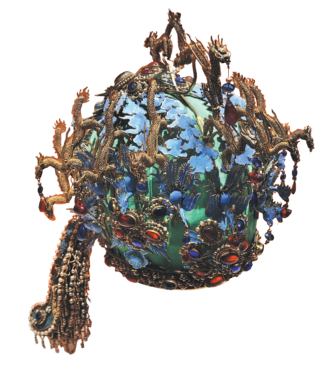
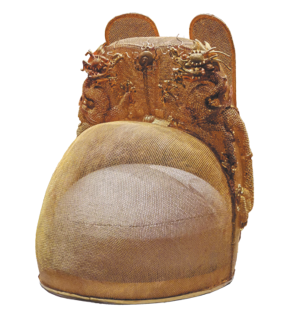
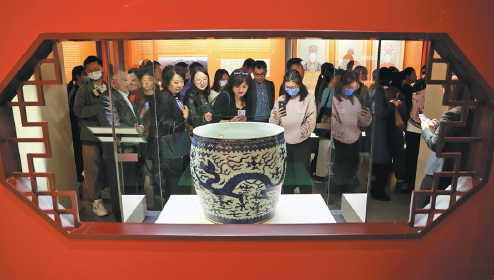

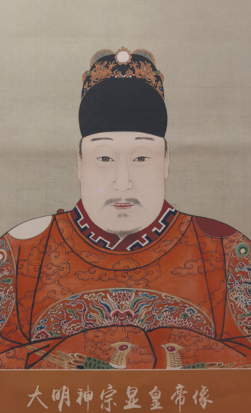

Today's Top News
- Japanese scholar condemns Japan's risky defense spending
- Xi stresses strategic importance of work to raise minors' moral standards
- Jimmy Lai found guilty of colluding with foreign forces
- Hong Kong court opens session to deliver verdict on Jimmy Lai's case
- China's economy posts steady growth in Nov
- Death toll rises to 16 in Sydney's Bondi Beach shooting






















